
Monday October 18 to Sunday October 24, 2021
– 21 Free Online Events for All Curious Minds –
Thank you to the hundreds of people who participated remotely.
TUESDAY 19th: Dave Richeson, Tamara Munzner, Erik Demaine
WEDNESDAY 20th: Tiago Hirth, Rachel Quinian, Alexandre Muñiz
THURSDAY 21st: Doris Schattschneider, Paula Apsell, Glen Whitney
FRIDAY 22nd: Jenny Quinn, Bob Hearn, Matt Baker
SATURDAY 23rd: Ayliean MacDonald, Moon Duchin, Red Deupree
For these and other published CoM presentations please follow the G4G YouTube channel
Schedule
Talks begin at Noon, 4:00 PM, 8:00 PM, ET* (Atlanta time)
Each talk was followed by a Gather.town session for socializing.
(*) Times are 16:00, 20:00, and midnight UTC/GMT
Sunday, October 17
“Join Gather space”
Let’s all reconnect with our community, and also get some practice with Gather, a wonderful platform for virtual socializing. The Gather space will be open all week, and everyone is encouraged to join this session, and to stop in after each of the scheduled talks.
Everyone on the G4G mailing list is already on the guest list. If you wish to join, and your email address is not accepted, please send email to support@g4gfoundation.org.
Monday, October 18
 Higher Dimensional Origami Constructions
Higher Dimensional Origami Constructions
Origami is an ancient art that continues to yield both artistic and scientific insights to this day. In 2012, Buhler, Butler, de Launey, and Graham extended these ideas even further by developing a mathematical construction inspired by origami — one in which we iteratively construct points on the complex plane (the “paper”) from a set of starting points (or “seed points”) and lines through those points with prescribed angles (or the allowable “folds” on our paper). Any two lines with these prescribed angles through the seed points that intersect generate a new point, and by iterating this process for each pair of points formed, we generate a subset of the complex plane. We extend previously known results about the algebraic and geometric structure of these sets to higher dimensions. In the case when the set obtained is a lattice, we explore the relationship between the set of angles and the generators of the lattice and determine how introducing a new angle alters the lattice. (Joint work with Deveena Banerjee and Sara Chari.).
Adriana Salerno is originally from Caracas, Venezuela, where she received her undergraduate degree in mathematics from the Universidad Simon Bolivar in 2001. She then went on to earn her PhD at the University of Texas in 2009. She is now a Professor of Mathematics at Bates College, a small liberal arts college in Maine. Salerno’s main research area is number theory, in particular the intersections of number theory with geometry, physics, cryptography, and coding theory. She is also very interested in the communication and teaching of mathematics to create a more inclusive and equitable math community.
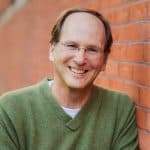 Writing about Math for the New York Times
Writing about Math for the New York Times
In the spring of 2010, Steven Strogatz wrote a 15-part series on the elements of math, from basic to baffling, for the New York Times. In this talk he will describe his adventures in bringing math to the masses, and will share the lessons he learned about what works… and what doesn’t.
Steven Strogatz is the Jacob Gould Schurman Professor of Applied Mathematics at Cornell University. He works on nonlinear dynamics and complex systems applied to physics, biology, and the social sciences. His latest book, Infinite Powers, was a New York Times bestseller.
 Animating Conway
Animating Conway
The plan is to show you very pretty animated proofs of two or three of John Conway’s ingenious theorems.
Burkard Polster is a mathematician at Monash University in Australia. As the Mathologer on YouTube he is trying his best to follow in the footsteps of Martin Gardner whose writings inspired him to become a mathematician and who introduced him to his mathematical hero John Conway.
Tuesday, October 19
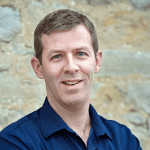 A Romance of Many (and Fractional) Dimensions
A Romance of Many (and Fractional) Dimensions
Dimension seems like an intuitive idea. We are all familiar with zero-dimensional points, one-dimensional curves, two-dimensional surfaces, and three-dimensional solids. Yet dimension is a slippery idea that took mathematicians many years to understand. We will discuss the history of dimension, which includes Cantor’s troubling discovery, the surprise of space-filling curves, the public’s infatuation with the fourth dimension, time as an extra dimension, the meaning of non-integer dimensions, and the unexpected properties of high-dimensional spaces.
Dave Richeson is a professor of mathematics and the John and Ann Curley Faculty Chair in the Liberal Arts at Dickinson College. His research interests include topology, dynamical systems, geometry, the history of mathematics, recreational mathematics, mathematics and the arts, and expository mathematics. He is the author of Euler’s Gem: The Polyhedron Formula and the Birth of Topology and Tales of Impossibility: The 2000-Year Quest to Solve the Mathematical Problems of Antiquity, and was also editor of the MAA’s Math Horizons magazine for six years. He grew up reading his father’s copies of Martin Gardner’s books and has been attending G4G since G4G11.
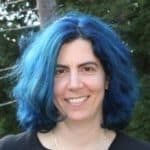 Geometry Center Videos, Revisited
Geometry Center Videos, Revisited
The Geometry Center’s three flagship videos from the early 1990s brought concepts from geometric topology to general audiences through computer-generated visualization: Not Knot, Outside In, and The Shape of Space. Uploads of these videos have been viewed many millions of times, and even upsampled to HD resolution, but the substantial written supplements had not been freely available. Now they are! Hundreds of smaller videos were also created by research visitors, summer interns, and the technical staff; we have started digitizing and uploading these as well. To celebrate these public releases (see https://www.cs.ubc.ca/~tmm/gc)
Tamara Munzner is a Professor of Computer Science at the University of British Columbia. She was on the technical staff of The Geometry Center from 1991 through 1995, and holds a PhD from Stanford from 2000. She published the book “Visualization Analysis and Design” in 2014 as the first in the AK Peters Visualization Series (CRC/Routledge), and continues as series editor. She received the IEEE VGTC Visualization Technical Achievement Award in 2015.
 New Ways to Fold a Cube from Paper
New Ways to Fold a Cube from Paper
What shapes of paper can fold into a unit cube? This seemingly simple question has many interesting answers and open problems, depending on what type of folding is allowed. In particular, we’ll see a new way to fold a 3 × 3 square into a unit cube using horizontal, vertical, and diagonal creases on the 6 × 6 half-grid.
This is joint work with Kingston Yao Czajkowski, Martin Demaine, Kim Eppling, Robby Kraft, Klara Mundilova, and Levi Smith.
Erik Demaine is a Professor in Computer Science at the Massachusetts Institute of Technology. Demaine’s research interests range throughout algorithms, from data structures for improving web searches to the geometry of understanding how proteins fold to the computational difficulty of playing games. He received a MacArthur Fellowship as a “computational geometer tackling and solving difficult problems related to folding and bending—moving readily between the theoretical and the playful, with a keen eye to revealing the former in the latter”. He appears in the recent origami documentary Between the Folds, cowrote a book about the theory of folding (Geometric Folding Algorithms), and a book about the computational complexity of games (Games, Puzzles, and Computation). Together with his father Martin, his interests span the connections between mathematics and art, including curved-crease sculptures in the permanent collections of the Museum of Modern Art in New York, and the Renwick Gallery in the Smithsonian.
Wednesday, October 20
 On the Power of Numbers
On the Power of Numbers
In 1502 (± 6) Luca Pacioli put together his De Viribus Quantitatis, a compendium of mathematical recreations and much more. It is the first collection of its size we know of. Meant for print, it was left in the calligraphy of an amanuensis until the 20th century. Together we’ll explore a selection of its over 200 mathematical miracles and dive into the history of book and author.
Tiago Hirth is a Ph.D. scholar funded by Fundação para a Ciência e a Tecnologia at the Centro Interuniversitário de História das Ciências e da Tecnologia (CIUHCT) at the University of Lisbon. He currently works as a consultant for the Gathering 4 Gardner Foundation and as an associate editor for the Recreational Mathematics Magazine. When he is not doing science outreach, performing magic, on the road with the Circo Matemático (which he helped found in 2011), giving workshops, organizing conferences, or otherwise being distracted, he enjoys doing research in Recreational Mathematics, Board Game Studies and the Conjuring Arts.
 Paper for Wallpaper
Paper for Wallpaper
This talk will present a case for an exploration of the wallpaper groups through the art and craft of origami. It will begin with a brief introduction to folding techniques for tessellations (and other patterns with symmetry), including some elementary moves that can be combined to produce patterns with any level of visual intricacy. We propose that origami tessellations provide a particularly effective mechanism for exploring wallpaper groups, because they frequently admit physical transformations that alter the symmetry group and can be implemented (and reversed) manually, with no more equipment than a sheet of paper. The mental and tactile experience of identifying and performing such alterations may facilitate recognition of the underlying symmetry structures. Quick and easy adjustments to crease patterns can result in changes that are mathematically significant (for example eliminating reflections while preserving rotational symmetry), or changes that dramatically alter the appearance but preserve the original wallpaper group. The talk will present some key ideas about the wallpaper group taxonomy, but will mostly focus on playing with paper.
Rachel Quinlan is an academic mathematician from the National University of Ireland, Galway. She completed a PhD in algebra at the University of Alberta in 2000, and her current research activity is mostly focussed on combinatorial aspects of matrix theory and linear algebra. She enjoys making symmetric patterns by folding paper, you can see some examples by searching on Twitter for @rkquinlan
 How to Roll Two Dice
How to Roll Two Dice
Players of games like Monopoly and Settlers of Catan roll a pair of six-sided dice and use the sum of the results. There are a number of designs for non-standard dice that give the same distribution of
results. One well known one is the pair of Sicherman dice, created by Col. George Sicherman, and popularized by Martin Gardner, which has the only other numbering of a pair of six-sided dice with positive integers that gives the same sums as standard dice. Col. Sicherman will be interviewed as part of this presentation. Moving beyond six sided dice and beyond taking sums gives more ways to arrive at the desired distribution, some of them discovered by the presenter.
Alexandre Muñiz designs puzzles and dice, many of which are described on his blog, and will be crowdfunding shaker dice using a novel application of graph edge labeling in the spring of 2022. He sings with the Portland Christmas Revels and the Sherwood Renaissance Singers, and dances with Renegade Rose Morris.
Thursday, October 21
 Two Conway Geometric Gems
Two Conway Geometric Gems
John Conway enjoyed discovering unusual properties of triangles and also enjoyed discovering properties of tilings. Two of his discoveries bear his name: The Conway Circle, and The Conway Criterion. I’ll talk about these two gems; one led to a new tiling app.
Doris Schattschneider, professor emerita of mathematics at Moravian University, is known for her publications and lectures about tilings and especially the work of graphic artist M.C. Escher. A friend of John Conway for more than 40 years, she offers this tribute to his memory.
 The Art of Science Communication
The Art of Science Communication
How do you tell stories about science? After 35 years at the helm of the celebrated PBS science series NOVA, Paula S. Apsell will discuss the art of science communication on television and online. Using clips from NOVA, she will share how complex scientific ideas are made not only accessible, but compelling to a wide range of viewers.
Paula S. Apsell ot her start in broadcasting at WGBH Boston and in 1975, she joined NOVA, a science documentary series that has set the standard for science programming on television and online, producing documentaries on subjects as varied as artificial intelligence, genetic engineering, and aviation safety. In 1985, after a year at MIT as a Fellow in Science Journalism, she became Senior Executive Producer at NOVA. In 2018, she was awarded the Lifetime Achievement Emmy by the National Academy of Television Arts & Sciences. She is a Fellow of the American Association for the Advancement of Science.
For a flyer click here.
 Convex Pintegon Tilings
Convex Pintegon Tilings
Tiling the plane with convex pentagons has a rich mathematical history in which Martin Gardner and a diverse cast of other participants play key roles. Broad audiences can appreciate the associated questions, and enjoy the beautiful images that the answers yield. All of these characteristics make such tilings highly worthwhile for math outreach. For hands-on presentations, example tiles with integer sides can ease the creation of construction supplies. I’ll share the math involved in determining the tesselating integer-sided convex pentagons, here dubbed “pintegons,” including results that the smallest pintegons in some of the known families are surprisingly large.
Glen Whitney is a former financial ‘quant,’ founder of the National
Museum of Mathematics, occasional math academic, editor of the
Playground problem column in Math Horizons, and author of
StudioInfinity.org.
Friday, October 22
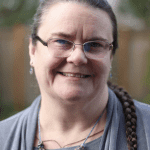 Always Look on the Sunnyside of Math
Always Look on the Sunnyside of Math
(Sing to the tune of “Always look on the bright side of life”)
«Some people think math’s bad and that really makes me sad / Math’s so much more than just arithmetic. / Math is everywhere and it’s beautiful, I swear. / Promoting math is not impolitic. / Always look on the sunny side of math. / Always look on the Sunnyside of math.»
Let’s adventure to Portland, OR, San Diego, CA, and Tacoma, WA to see how each has publicly played and displayed puzzles, patterns, and problems to create a positive attitude towards math. By no means an exhaustive list, these places (and the people involved) have inspired me to do more. Maybe they will inspire you too.
Jenny Quinn is the President of the Mathematical Association of America and a Professor at the University of Washington Tacoma. An award-winning teacher, scholar, and author, Jenny is committed to making mathematics accessible, appreciated, and humane. She serves on the STEAM Learning Collaborative Action Network, part of the Foundation for Tacoma Students, whose goal is to expand interest, experience, and success in science, technology, engineering, arts, and mathematics for all Tacoma students—particularly girls, students of color, and those impacted by poverty. During the pandemic, the #TacomaMath workgroup created grade specific math quests (both electronic and printed), chalked puzzles outdoors, and produced short YouTube recordings to encourage a culture of love for math in the community. Also in response to the pandemic, Jenny began the blog Math in the Time of Corona (https://mathinthetimeofcorona.wordpress.com/) where she chronicles her experiences on remote teaching of mathematics, maintaining humanity, building community in isolation, and the continuing impacts of COVID-19 on our personal and professional lives.
As a combinatorial scholar, Jenny thinks that beautiful proofs are as much art as science. Although lately, she has been focusing on art as a means to communicate mathematics, which we will get to hear a little about in today’s talk.
 Reconfiguration: How Martin Gardner Inspired an Area of Theoretical Computer Science
Reconfiguration: How Martin Gardner Inspired an Area of Theoretical Computer Science
A popular area in theoretical computer science for the past ten or fifteen years is known as “combinatorial reconfiguration”, or just “reconfiguration”. What is not widely appreciated is the debt this field owes to Martin Gardner. As I will show, the foundational problem in reconfiguration — essentially, a coin-sliding puzzle — originated as an exchange gift for G4G6!
Bob Hearn was raised on Martin Gardner books and Scientific American articles. This developed into a lifelong interest in mathematics and puzzles, leading to a Ph.D. at MIT and a resulting book, Games, Puzzles, and Computation, with Erik Demaine. Along the way he co-wrote the once-popular Mac program ClarisWorks, and participated in a number of other software startups. Bob’s other passion is running ultramarathons; he holds several age-group American Records. Bob has attended the Gathering 4 Gardner since 2002, and has been the G4G Program Chair and MC since 2015.
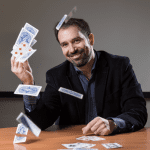 Mathemagical Themas
Mathemagical Themas
I will perform — and explain! — some magic tricks based on interesting mathematical principles.
Matt Baker is an internationally renowned Georgia Tech mathematics professor by day and an accomplished magician by night. Matt received his Ph.D. in Mathematics from UC Berkeley in 1999 and was promoted to Full Professor at Georgia Tech in 2011. He has published three math books and over 40 research papers, writes a popular mathematics blog, and is a Fellow of the American Mathematical Society. Matt’s enthusiasm for teaching has won him numerous awards, including a Georgia Tech CETL/BP Junior Faculty Teaching Award and the University System of Georgia Board of Regents Teaching Excellence Award. Matt currently serves as the Associate Dean for Faculty Development in the Georgia Tech College of Sciences. In his life as a magician, Matt has also met with acclaim. Matt is a two-time winner of the Greater Atlanta Magician of the Year award and has performed three times at the invitation-only Fechter’s Finger Flicking Frolic, the world’s premiere close-up magic convention. Matt’s magic creations have appeared in several national periodicals, and in 2019 he published his first book of original magic entitled “The Buena Vista Shuffle Club”. World-renowned magician Joshua Jay calls it “an excellent, funny, and personal collection of magic that is a joy to read”.
Saturday, October 23
 The Pentagon: A User’s Guide
The Pentagon: A User’s Guide
Regular pentagons throw a spanner in the works when it comes to tessellation but don’t let that one case tarnish the good name of the pentagon!
Come along as we explore the 15 irregular pentagons which do tile the plane, journey through five fold symmetry, make a quick pit stop to look at rep-tiles and of course … there will be fractals.
Get ready to nerd out in this complete manual of all things fun and five sided!.
Ayliean MacDonald is a Maths teacher who looks for creative ways to explore, explain and spark interest in Maths. Her art often focuses on the use of timelapse drawings of patterns and fractals to show growth and progression of sequences which may not be obvious through still images of the Mathematical objects themselves.

Graphs, Geometry and Gerrymandering
What are all the ways to draw the lines, when you’re dividing up a state to get representation? If you can’t find them all, can you choose a good sample? I’ll discuss some surprisingly simple questions about graphs and geometry that can help us make advances in policy and civil rights.
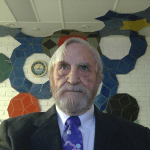 Flexagons: Down the Zig Zag Path with Martin Gardner
Flexagons: Down the Zig Zag Path with Martin Gardner
My story begins in 1959, when I was introduced to flexagons by Martin Gardner. After discovering a different tetraflexagon in 1961, I have had the desire to tell the story. I have come up with my harmonized flexagon theory based on the series of tetraflexagons that I have discovered having a one to one relationship with polyominos, slightly redefined. Then I discovered the same concepts hold for hexaflexagons, putting both kinds on the same platform with many common properties. I will also show how I make them and provide support for my theory. Learning of Penrose tiles and then making the most beautiful Penrose tile floor in 2006, my desire was increased to also show my concept for coloring the Penrose pattern to this special audience. I am planning to use flexagons as a vehicle to demonstrate my Penrose artwork when I come to Atlanta for G4G14. I can show some of them and some of the other artwork I expect to have at my table. Visit my site at www.r2d3.com for much of the content for this presentation, written before the invite to CoM.
Red Deupree was trained as a scientist and as a child, he aspired to be an inventor or a scientist (the guy in the white lab coat) When he was 30, he met the computer and it was like a duck meeting water. He has made his living writing and then maintaining custom software and databases, first for Ford then for R2D3 Corporation. After he retired, he wrote apps to formalize his system for coloring Penrose tiles, and when he learned of G4G and came up with the idea of using tetraflexagons to show Penrose artwork, he wrote apps to design flexagons, and over the pandemic delays, he has formalized his harmonized flexagon theory being presented here.
Sunday, October 24
 Building a Puzzle Museum
Building a Puzzle Museum
You just woke up from a dream where your favorite uncle left you an inheritance of all the puzzles every made since the beginning of time. Being a collector of manipulative puzzles yourself you are delighted at first imagining going from one puzzle to the next solving some as you go, reveling in the abstract beauty of some, being frustrated by others and enjoying the mathematics woven into the most mundane. A shudder goes through your entire body with the realization that your house is too small for this windfall. How many puzzles are there actually? How are they organized? How are you to preserve and share this collection to the rest of the world?
Without much of an exaggeration, Roxanne and George Miller had this dream come true. This session deals with how they bought a house nearby and turned it into the world’s largest puzzle museum. Each puzzle is displayed on a shelf or in a pull drawer. Each puzzle can be picked up, played with, photographed and solved. A video of all 50,000 puzzles in two houses will be shown, ever so briefly. The philosophy of the museum will be explained and time will be left over for questions such as: Where is this museum? Is it opened to the public? Can I come and take pictures? and Why the hell did you get this collection?
George Miller studied Artificial Intelligence, He works in building global FX systems for Bank of America. He has the hobby of prototyping puzzles prior to mass marketing. Roxanne Miller studied History. She works as English teacher in Hong Kong. Her hobby is collecting all twisty, Hanayama, Berrocal, and crystal puzzles.
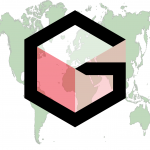 3G – the Gardner Global Gala
3G – the Gardner Global Gala
What makes the Gathering such a delight is what happens when we share time together and mix our ideas and creations. In that spirit, we invite you to join us for a virtual extravaganza of gags, magic and stunts from around the world.
From Norman, Oklahoma, Jim Gardner will present a fun Gardner gag. Magic lovers are in for a treat with Rafael Benatar from Caracas, Thomas Fraps from Munich, Pit Hartling from Frankfurt, Lior Manor from Israel, Norman Gilbreath from Los Angeles (presented by Gordon Bean from Schenectady), and Mark Mitton from New York City. From Palo Alto, Tadashi Tokieda will present a curious recreational math novelty, and speedcubers Lucas Garron and Cary Huang will give an exhibition match of Speed Conway’s Game of Life, and show us some dazzling speedcubing tricks.
More surprises are in the works and will be revealed on October 24th at 4 PM!
Gordon Bean’s creations have been performed by magicians around the world. He has written for Genii and Magic magazines and is the former librarian of The Academy of Magical Arts, located in Hollywood’s Magic Castle.
Rafael Benatar is a sleight-of-hand magician and a master of the lute who plays a variety of early plucked instruments. A winner of the International Brotherhood of Magicians Linking Ring trophy, he has been a favorite at the Magic Castle for many years.
Thomas Fraps is a magician and an ex-physicist who collaborates with psychologists and brain scientists on designing lab experiments that use magic to learn about human cognition and perception mechanisms.
James Gardner is the son of Martin Gardner and a Professor Emeritus of Special Education at The University of Oklahoma. His hobbies include gadgets, the occasional magic trick, scuba diving, and keeping alive the legacy of his father’s work.
Lucas Garron is a mathematician, speedcuber, dancer, and coder. In his earlier days, he set 78 German national records for the Rubik’s Cube and other puzzles.
Norman Gilbreath is the creator of Gilbreath’s Conjecture and the discoverer of the Gilbreath Principle, which Max Maven described as “a thing of terrifying beauty.”
Pit Hartling is the author of two critically acclaimed books on card magic, and the second-prize-winner at the 1994 World Championship of Magic in Tokyo.
Cary Huang is a Stanford CompSci grad student interested in cellular automata, fractals, speedsolving Rubik’s Cubes, and 2D animation.
Lior Manor has a B.Sc in Math and Computer Science from Tel Aviv University. He has been doing magic shows for the high-tech industry since 1987, and is a pioneer in performing magic online.
Mark Mitton is a magician and the long-time host and producer of the G4G gala shows. He performs at private functions and corporate events, produces unique entertainment and educational programs around the world, and explores the limits and potential of perception.
Tadashi Tokieda is a Professor of Mathematics at Stanford University. He is also active in inventing, collecting and studying toys that uniquely reveal and explore real-world surprises of mathematics and physics.
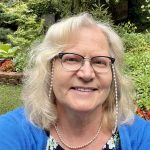 Travelling with a Mathematician
Travelling with a Mathematician
In 1960’s and 70’s Prof. David Henderson (1939-2018) was well known as a topologist. However, he left abstract spaces to pay more attention to math education. He always thought of himself as a geometer and is known for his books Experiencing Geometry and Differential Geometry: Geometric Introduction. Bob Moses (1935-2021) invited him to design geometry materials for Algebra Project. This talk will be about my travels with David, how he taught me to see mathematics everywhere.
Daina Taimina was born in Riga, Latvia. She has taught various mathematics courses in The University of Latvia and in Cornell University. She is widely known as a pioneer of hyperbolic crochet and her book Crocheting Adventures with Hyperbolic Planes. Her initial mathematical models have led her into fiber arts and her works have been exhibited in various art shows.

Thank you, Colm, Bob, Tiago, Scott, Skona & Team, and all the amazing experts for your beyond measure wonderful and magical magical week. <3 xxx
I took a week off work so that I could stay up late enough every day to watch the (to me) 1am to 2am talk each day as well as the two less daunting ones. I think that must say something about how I feel about CoM events.
I just watched Frank Morgan’s talk on Optimal Pentagonal Tilings. I kept jumping out of my chair and shouting, “Frank, please stop blowing my mind!” In addition to the superb organization of the material and the terrific slides, the whole talk has a symmetry and beauty worthy of the inimitable Gardner tradition. I wish I had not been busy the day he gave it. I would have liked to see the discussion that followed.
Thank you, G4G team, for a marvelous week.
It’s just the kind of excitement we seek.
A matchless parade of brainy presenters
On subjects diverse by brilliant mentors.
We oohed and aahed at every slide,
At every idea that was a wild ride.
Now Martin may have inspired a lot,
But give credit, too, to the new minds so hot
That math, magic, puzzles, and poetry, too,
Today’s generation builds wonders for you.
Martin Gardner’s devotion sowed the best seeds,
So let us rejoice where such energy leads.
As I’ve gotten older I appreciate more and more the purely human elements in presentations such as these. For example, although technical problems impacted Red Deupree’s talk, this was more than made up for by his infectious enthusiasm for flexagons and tilings. (I particularly enjoyed the tour of his Penrose themed home.) Also very nice were Daina Taimina’s heartfelt memories of her travels with geometer David Henderson. I chuckled at her comment about David’s return from a conference (I believe it was in Florida) which I think translated as “David went to Florida and all I got was this photo of an Archimedean screw.” I’m very grateful for all the time and effort the g4g organization expends to bring such moments to us.
What a beautiful, inspiring event. THANK YOU